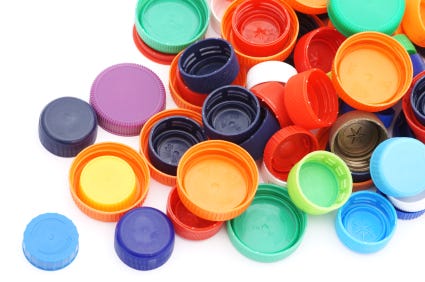A new market study from Ceresana has analyzed the European market for closures, taking a closer look at applications such as lemonades, water, fruit juices, beer, wine & spirits, along with cosmetics and pharmaceuticals. In the recently published study, the market researchers forecast European demand for these every day products to rise to about 460 billion units by 2021.
September 11, 2014
A new market study from Ceresana has analyzed the European market for closures, taking a closer look at applications such as lemonades, water, fruit juices, beer, wine & spirits, along with cosmetics and pharmaceuticals. In the recently published study, the market researchers forecast European demand for these every day products to rise to about 460 billion units by 2021.
Typically, plastic containers are usually combined with a plastic closure and as the quality continues to improve, the firm said that it is no surprise they are gaining access to more and more packaging segments. The market for plastic closures can profit from the increase usage of PET bottles such as a rising demand for bottled water and smaller packaging sizes as well as dispensing systems that will provide further growth in the future.
 Materials traditionally used for closures, such as aluminum, tinplate or cork, are losing market shares, the firm stated. In the segment cosmetics and pharmaceuticals, the strong increase of demand for plastic packaging comes at the expense of glass containers. One advantage for manufacturers is the fact that plastic, as a universal material, can be used for virtually all types of packaging. As a result, the market for plastic closures is not linked as closely to specific packaging means as are, for example, crown corks to the sale of beer bottles. But wine, however, is an exception. It is becoming more and more common to use metal closures.
Materials traditionally used for closures, such as aluminum, tinplate or cork, are losing market shares, the firm stated. In the segment cosmetics and pharmaceuticals, the strong increase of demand for plastic packaging comes at the expense of glass containers. One advantage for manufacturers is the fact that plastic, as a universal material, can be used for virtually all types of packaging. As a result, the market for plastic closures is not linked as closely to specific packaging means as are, for example, crown corks to the sale of beer bottles. But wine, however, is an exception. It is becoming more and more common to use metal closures.
But what about corks?
Wine closures made from cork (either one-piece or agglomerated cork) were not facing serious competition for a long time. But nowadays plastic and especially metal are used in order to reduce costs and limit negative effects natural cork might have on the taste of the wine. In Spain, Italy, France and Portugal, the key growing area of cork oaks, on the other hand, the substitution for plastic and metal closures proceeds much more slowly. These regions have traditionally been growing wines that require properties specific to cork closures, e.g. exchange of oxygen, for afterripening processes. Yet in other countries, for example Greece and Austria, the market share of cork fell rapidly. The largest growth market currently is the segment aluminum screw caps.
Trends that impact innovation
The market for closures is subject to governmental regulations, but also general trends such as convenience, rising women's employment, sustainability or lightweighting. In many industrialized countries, effects of the economic crisis such as a rising unemployment rate and subsequent decline of available income are playing a role, as is demographic development. Ceresana expects demand for more complex closures such as tamper-evident closures and dispensers to rise. The industry maintains its focus on lightweighting, since lighter closures will reduce consumption of raw materials, transport costs and impact on the environment. Childproof closures are becoming more important in the growth market pharma especially. The aging population in many countries renders easy-opening and also easy-resealing more important. Dispenser system will have to guarantee an even better dosing and handling in this regard.
About the Author(s)
You May Also Like


